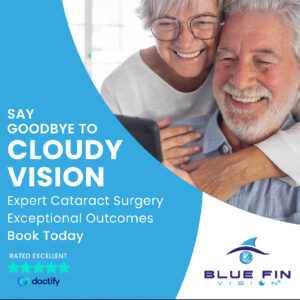Cataract surgery has become a transformative procedure, not just for those affected by cataracts but for the healthcare field as a whole. This procedure offers not only a restoration of sight but also a substantial improvement in the lives of patients who may have been dealing with the challenges of deteriorating vision for years. The ongoing advancements in surgical techniques, technology, and post-operative care continue to expand the possibilities for patients, making cataract surgery one of the most successful and frequently performed surgeries in the world.
The underlying cause of cataracts is the natural aging process, where the eye’s crystalline lens becomes cloudy, leading to progressively worsening vision. While cataracts develop gradually, they can significantly impair a person’s ability to perform daily activities. If left untreated, cataracts can lead to severe visual impairment, making it difficult to engage in basic tasks like reading, driving, or even recognizing faces. Cataract surgery provides a solution that is safe, effective, and life-changing, giving individuals the ability to regain their vision and return to the activities they love.
One of the primary reasons cataract surgery has such a high success rate is the combination of state-of-the-art technology and precision in surgical techniques. The technique of phacoemulsification, which uses ultrasonic waves to break up the cataract and remove it, has significantly reduced the invasiveness of the procedure. The small incisions required in modern cataract surgery mean a lower risk of infection, less trauma to the eye, and faster recovery times compared to older surgical methods that required larger incisions.
In addition, femtosecond laser-assisted cataract surgery has revolutionized the way cataracts are treated. By using lasers to perform key parts of the surgery, including the creation of corneal incisions and the fragmentation of the cataract, surgeons can achieve an unprecedented level of precision. This technology allows for greater control over the procedure, which can lead to faster healing, more predictable outcomes, and fewer complications. The use of lasers also reduces the mechanical stress placed on the eye, making the surgery more comfortable for the patient.
The choice of intraocular lens (IOL) is another important factor in achieving the best possible vision after surgery. IOLs are designed to replace the cloudy natural lens, and there are numerous options available to address a range of vision needs. While monofocal IOLs—lenses that correct for either near or distance vision—have been the standard for many years, newer options now offer more flexibility. Multifocal lenses allow for clear vision at multiple distances, reducing or even eliminating the need for reading glasses. Accommodating IOLs work with the natural muscles of the eye to provide a broader range of vision, while toric lenses correct astigmatism, a common refractive error. With these advances, patients now have more opportunities than ever before to achieve their desired visual outcomes.
Post-operative care is a critical aspect of cataract surgery, and today’s patients benefit from more streamlined and effective recovery processes. Immediately after surgery, patients are typically given eye drops to prevent infection and reduce inflammation. They are also advised to avoid certain activities, such as strenuous exercise, swimming, or rubbing the eyes, to ensure proper healing. Though recovery times vary, many patients experience a dramatic improvement in their vision within days, and most are able to resume normal daily activities within a week or two. Follow-up appointments with the surgeon are important to monitor the healing process and detect any potential complications early.
The emotional and psychological benefits of cataract surgery are as significant as the physical improvements in vision. For many individuals, cataracts not only impair vision but also limit their independence and quality of life. Restoring clear sight can have a profound impact on mental well-being, reducing the frustration, fear, and dependence that often accompany vision loss. Patients often Cataract surgery report feeling more confident and capable after their surgery, with the ability to engage in social activities, hobbies, and tasks that were once difficult. This sense of independence can be especially empowering for elderly patients, who may have been relying on family or friends for help with tasks like reading or driving.

Furthermore, cataract surgery can also have substantial societal and economic benefits. By restoring vision, individuals can remain active and engaged in their communities, contributing to social activities and even the workforce. For older adults, the ability to continue working, driving, or maintaining an active lifestyle can have significant mental and physical health benefits. The positive effects of improved vision extend beyond the patient, helping caregivers, families, and communities experience less burden as the patient regains their independence.
While cataract surgery is highly effective, it is important to note that, as with any surgical procedure, there are risks involved. These can include infections, bleeding, or retinal detachment. However, the risk of severe complications is minimal, and modern techniques and safety protocols have made cataract surgery one of the safest surgical procedures. The benefits far outweigh the risks, with the vast majority of patients experiencing significant improvements in their vision, often to the point of no longer needing glasses or contact lenses.
Looking ahead, the future of cataract surgery is even brighter, as new innovations continue to emerge. Researchers are exploring ways to improve intraocular lenses, develop advanced surgical tools, and further reduce the invasiveness of the procedure. These innovations are expected to provide patients with even more tailored solutions and potentially faster recovery times, ensuring that cataract surgery remains at the forefront of ophthalmic care.
In conclusion, cataract surgery is a proven, life-changing procedure that offers individuals the opportunity to restore their vision and improve their overall quality of life. With cutting-edge technology, advanced surgical techniques, and a wide range of intraocular lens options, cataract surgery continues to evolve, providing patients with better outcomes and faster recoveries than ever before. Whether restoring the ability to read, drive, or simply enjoy life’s moments, cataract surgery offers more than just improved eyesight—it provides a path to greater independence, confidence, and happiness.